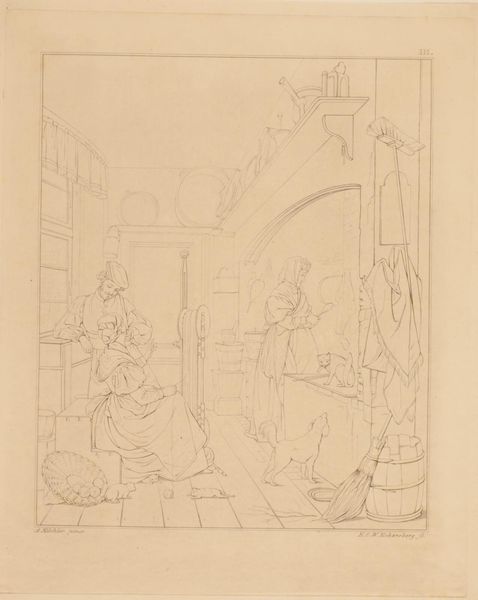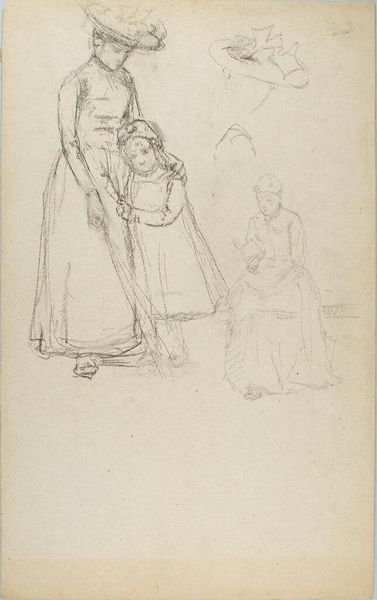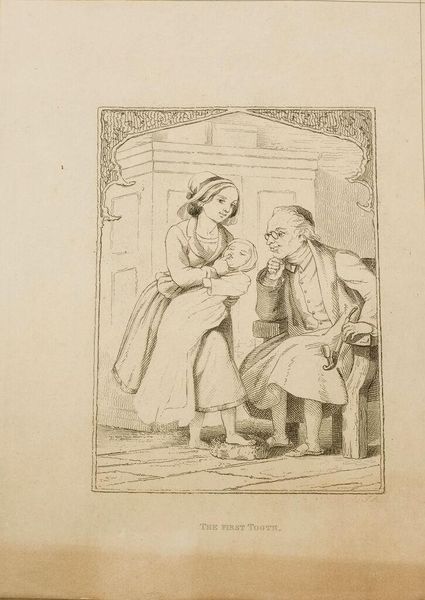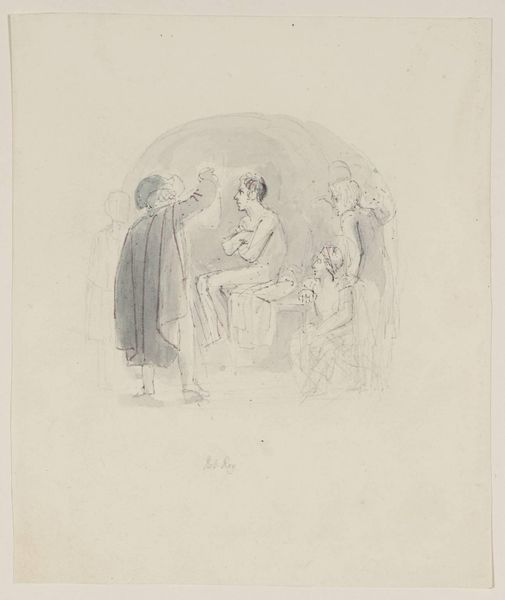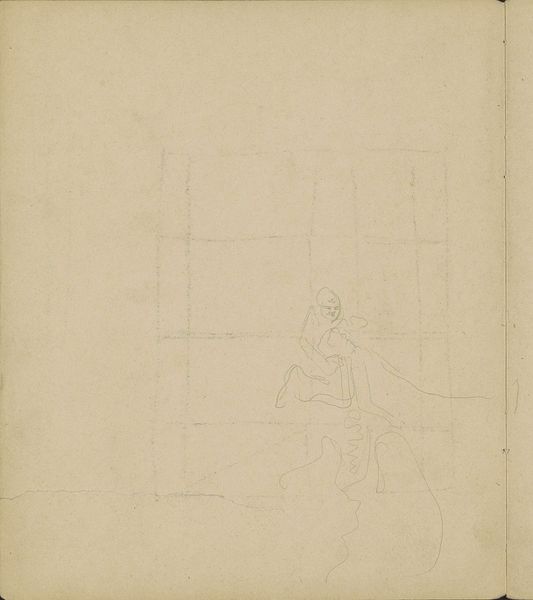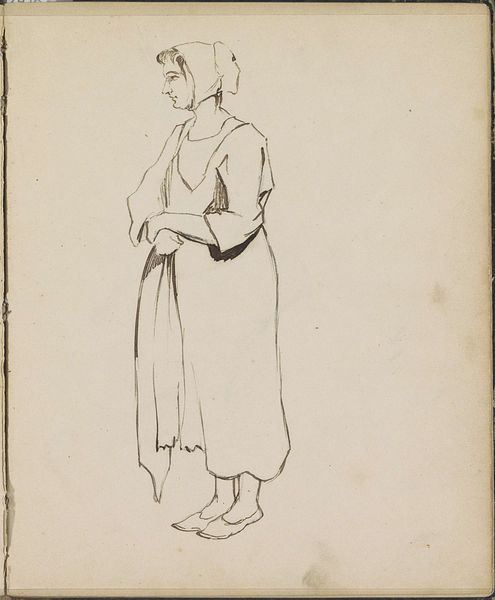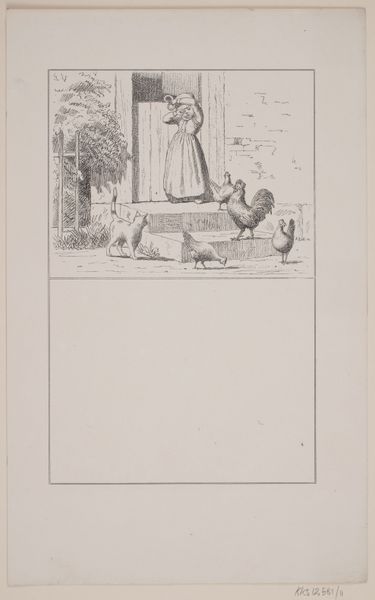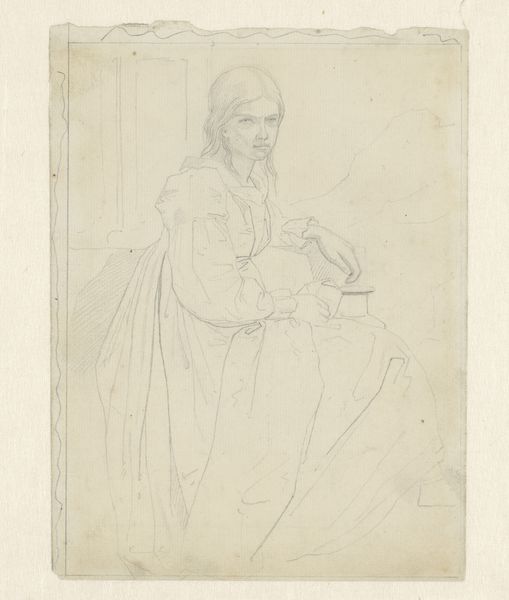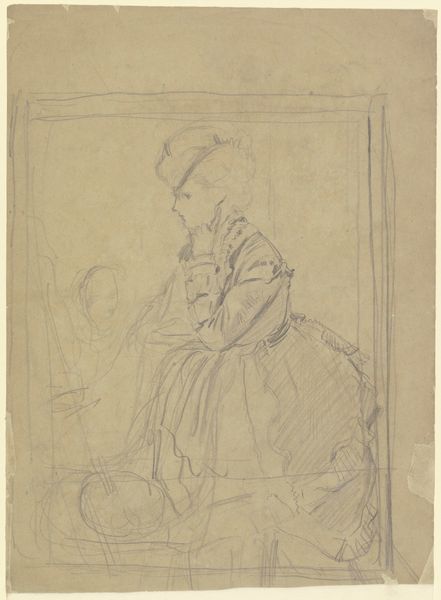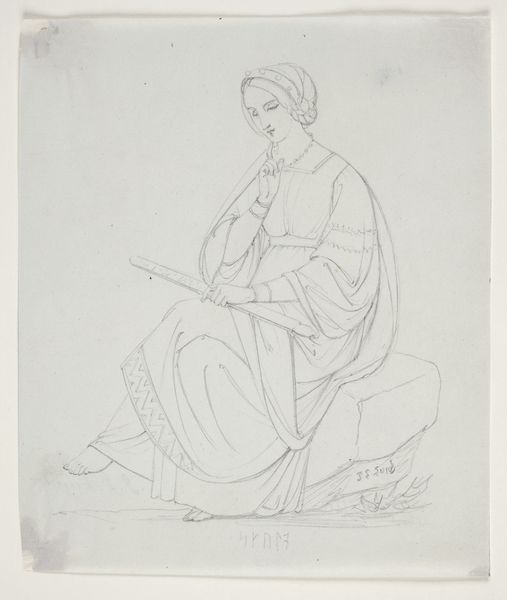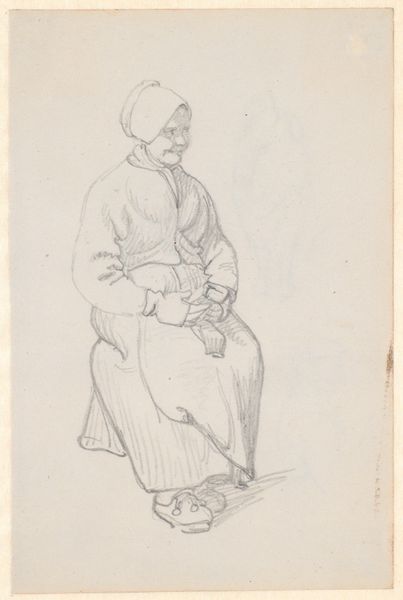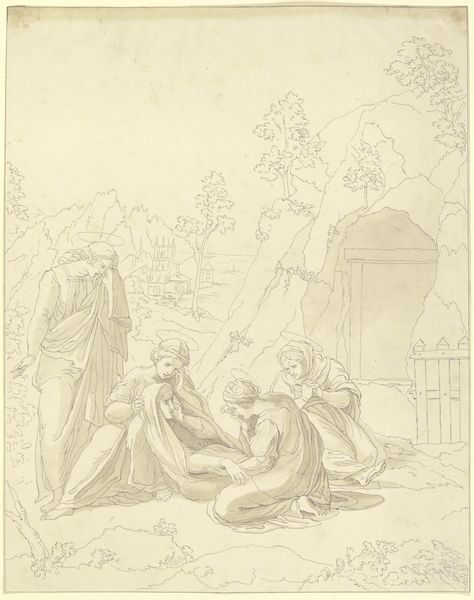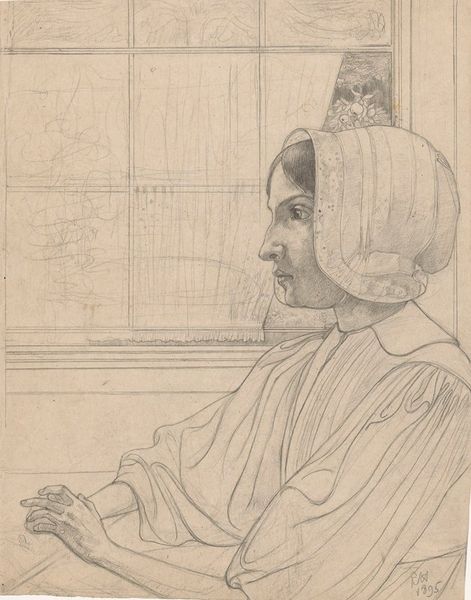
drawing, pencil
#
drawing
#
caricature
#
caricature
#
figuration
#
pencil
#
line
#
islamic-art
#
genre-painting
Dimensions: overall: 32.4 x 25.9 cm (12 3/4 x 10 3/16 in.)
Copyright: National Gallery of Art: CC0 1.0
Curator: This intriguing pencil drawing is titled "Market in Algiers" by Thomas Schofield Handforth. It depicts a lively scene, seemingly frozen in a moment of quiet exchange. Editor: There’s a raw energy to it, isn't there? Almost like a forgotten sketch from a travel journal. I can almost feel the heat, smell the spices... It’s muted but vibrant at the same time, if that makes any sense. Curator: Absolutely. Handforth, though an American artist, appears to be engaging with Orientalist themes here, quite popular at the time, depicting everyday life in North Africa, which was then under French colonial rule. The lines are delicate, almost tentative. Editor: The figures almost blend into the architecture; it’s like the market breathes around them. The arched doorway framing the figures in the background, though, it almost gives them a stage, doesn’t it? It makes you wonder if they are conscious of being observed by an outsider, by the artist, and later by us? Curator: That tension is palpable. "Genre painting" as it's classified brings with it complex power dynamics. The artist is recording a moment but also interpreting a culture, often through a Western lens that could exoticize or stereotype. It's difficult to tell because we don't know the artist’s true intent. Is he an uncritical Orientalist, or is this just another subject, an observation of daily life in Algiers? Editor: Exactly! Are we laughing *with* or laughing *at* these figures in this bazaar? You have to ask these questions about humor and representation. The details in the woven basket feel particularly careful and detailed. And I love the simple elegance of the sweeping robes—even a quick sketch hints at the beauty and texture. Curator: Looking closer, one wonders about Handforth's intentions. Without specific dates for this drawing, it’s tough to place it definitively within the broader socio-political landscape. Did he show these works? How were they received? How did this drawing engage or critique contemporary attitudes towards North Africa? Editor: It is almost a haunting reminder, isn't it? These little captured slices of existence remind you of real people, in real places, who live regardless of whether artists notice them, paint them. The drawing becomes an artifact of seeing, more than a perfect likeness, which this never pretended to be. Curator: Indeed. An observation, a depiction, and ultimately, a conversation starter about art's role in shaping our understanding of the world and each other. Editor: Yeah, well, now I’m just hungry for some Algerian pastries. Maybe this audio guide needs a snack pairing suggestion, like tagine.
Comments
No comments
Be the first to comment and join the conversation on the ultimate creative platform.
